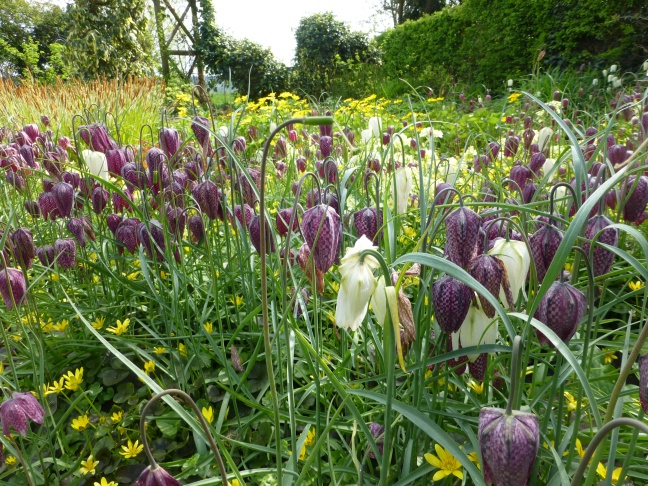Our NGS open day on Sunday 23rd was a success. The garden looked immaculate – Mr B’s mowing and edging set off the flower beds perfectly. It is always great to share Upper Green with like-minded gardeners and the weather was kind to us . The weather has not been so kind this week. The unprotected Rodgersia podophylla, which had looked so good, has been hit badly by the frost as have the tips of Mr. B’s potatoes under their cosy cloches. The potatoes will be fine but sadly the damage to the beautiful chestnut-brown fingered leaves of the rodgersia will persist.
The pink flowers of the tiny Daphne cneorum var. pygmaea in the trough have a tremendous scent. It is the first year it has flowered. When the daphne is a little bigger, the area around the front door should be redolent with sweet perfume.
I prepared a small leaflet about the garden for the visitors, highlighting some of my favourite plants including balm-leaved red dead nettle (Lamium orvala). The large dark pink flowers hide amongst soft heart-shaped leaves. I also have the white flowered variety. Another beauty is the alpine candytuft, Iberis sempervirens ‘Fischbeck’, which has masses of white flowers lighting up the gravel bed.
Delights in the rock bed include soft strokable seedheads of Pulsatilla vulgaris (pasque flower), and alpine aquilegias, both blue Aquilegia flabellata var. Pumila and red Aquilegia grahamii. Aquilegias and pasque flowers are seeding around- good news.
Root parasitisation by yellow rattle (Rhinanthus minor) has had a tremendous impact on the vigour of the grass on the Ha-Ha and the cowslips (Primula veris) are flowering. I have great hopes for a mini-meadow and will plant wildflower seed in the autumn.































